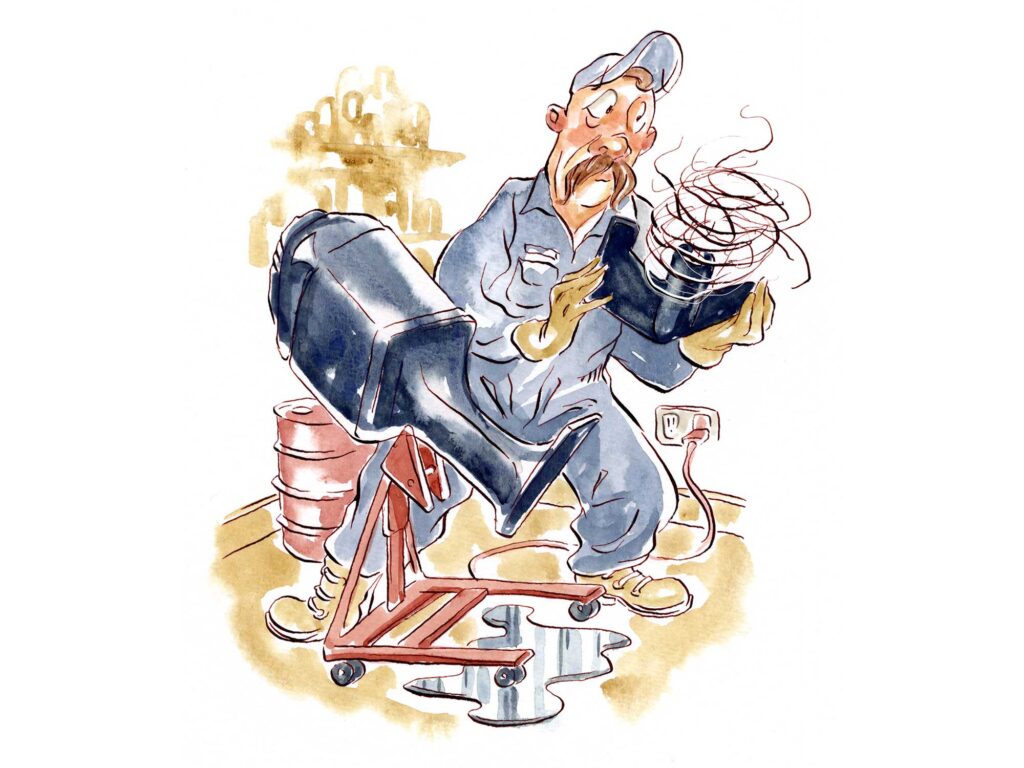SB Television
The Key to Successful DIY Maintenance
 Proper maintenance is important whether you’re doing it yourself or having someone else perform it.
Tim Bower
Proper maintenance is important whether you’re doing it yourself or having someone else perform it.
Tim Bower
The most important element of do-it-yourself boat maintenance is the “do it” part. Too often, the best DIY intentions are undone by procrastination, inattention, cheapness or just plain laziness. I’m not sure why our friend Russ failed to check the lower-unit lube on his Merc 150 this past fall, but last week, when he pulled the Russ-Craft out of its offseason storage spot in the back corner of his pole barn, he noted a puddle of gray, viscous 90-weight on the floor directly under the motor. A bad sign.
Because Russ chose not to check the lube this past fall, he did not know that a substantial amount of lake water had infiltrated the case. The 10-day stretch of below-zero overnight temps in January likely resulted in glacierlike pressure as that water expanded into ice, creating pressure sufficient to fracture die-cast aluminum. There may have even been a dramatic popping sound when the gear case cracked, probably in the middle of a frosty full-moon night as Russ slept beneath a down comforter, dreaming of a summer afternoon at the sandbar. His boat should have been as snug.
Despite the fact that the Mercury 150 was designed specifically for easy DIY maintenance by owners just like Russ, he admitted to not checking the gear-case lube for a few seasons. It always looked fine in the past, so he cut a corner.
Dan the Outboard Man was able to source Russ a good used gear case, which Dan refurbished with new seals, a water-pump kit and fresh lube. Being proud DIYers ourselves, my good friend Chuck Larson and I offered to help Russ replace the gear case this past Saturday afternoon.
The first job was to remove the old lower unit, and as we got started, Russ said: “Dan says fishing line probably cut through the prop-shaft seal, but I stopped checking for line a few years ago when I got this Tempest prop with the line-cutter holes.”
Chuck and I looked at each other. Then we looked at the propeller. A little tail of fishing line was sticking out of one of the PVS holes in the prop hub.
“Russ, those holes are there to ventilate exhaust around the blades, to help the motor rev up for better acceleration,” I explained. “They are not line-cutting devices.”
“Really,” Russ said as he stroked his chin. “Really. I guess that might explain things.”
We pulled off the prop, and that little tail of line led to greasy bird’s nest of monofilament tangled around the prop shaft, and even more jammed up on the seal, several season’s worth of line. Humiliation can be an excellent tutor, but being good friends, Chuck and I did not rub it in too hard on Russ.
Read Next: The Reverse-Rotation Theory Goes Down in Flames
We offered Dan the old case for parts.
“Just throw it on the recycling pile,” Dan said. “If it had that much water inside, the gears are almost certainly shot anyway. This unit would not have lasted another season. Better that it cracked over winter than failed in the middle of the lake this summer.”
Leave it to Dan to find the silver lining. And remember, Boating friends, if you’re going to do it yourself, do it all. And do it right.
The post The Key to Successful DIY Maintenance appeared first on Boating Mag.
- Home
- About Us
- Write For Us / Submit Content
- Advertising And Affiliates
- Feeds And Syndication
- Contact Us
- Login
- Privacy
All Rights Reserved. Copyright , Central Coast Communications, Inc.